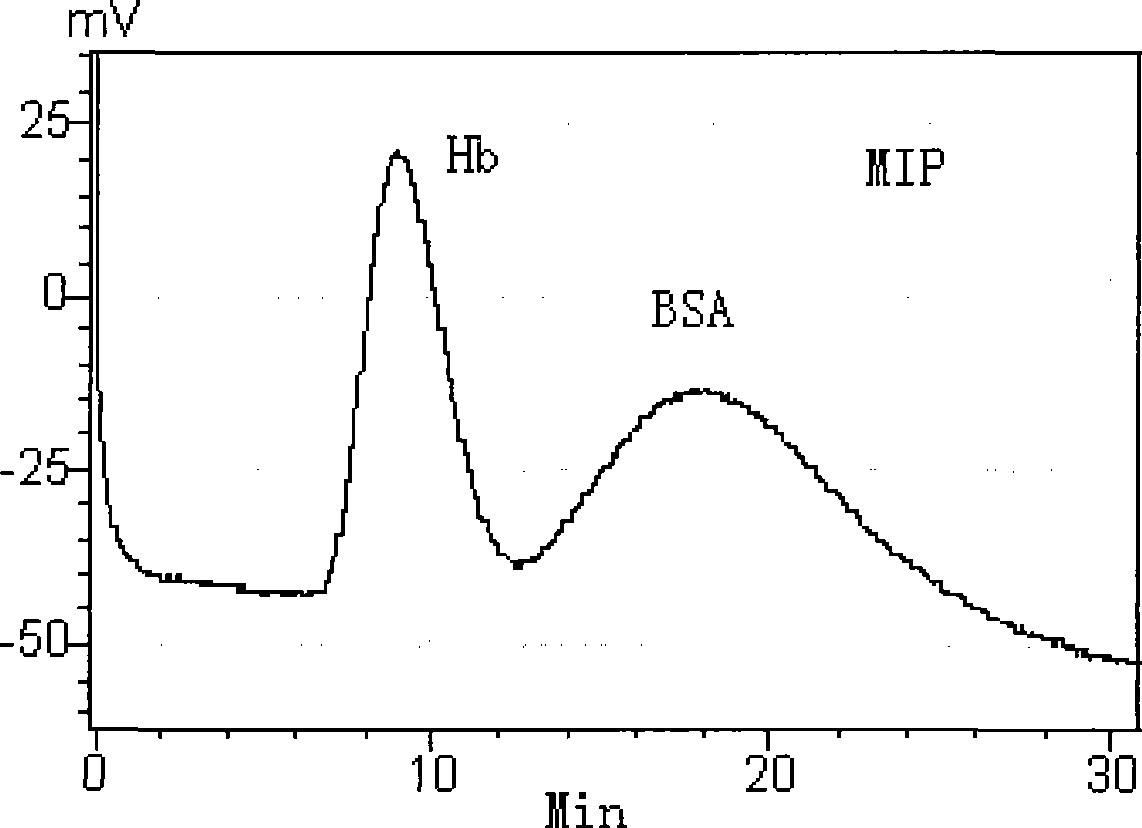Production method for protein molecule imprinting integral column
A technology of molecular imprinting and monolithic columns, which is applied in material separation, analysis materials, measuring devices, etc., can solve the problems of protein template molecular embedding, poor selectivity, and inability to recognize and separate proteins, and achieve simple preparation process, easy elution, The effect of low synthesis cost
- Summary
- Abstract
- Description
- Claims
- Application Information
AI Technical Summary
Problems solved by technology
Method used
Image
Examples
Embodiment
[0016] Select acrylamide and / or methacrylamide with a weight concentration of 3.0-6.5% and methacrylic acid with a weight concentration of 0.1-0.4% as functional monomers, and a cross-linking agent N, N`-sub Methyl bisacrylamide or piperazine bisacrylamide were co-dissolved in 10 mM phosphate buffer solution (pH 4.5-7.5). Nitrogen gas is passed through to remove dissolved oxygen therein, and then template protein molecule lysozyme, cytochrome C or bovine serum albumin with a weight concentration of 0.15-0.55% is added. Place it at 0-4°C for 2-5 minutes, add initiator ammonium persulfate with a weight concentration of 0.08-0.2% and an accelerator N, N, N`, N`-tetramethylethane with a weight concentration of 0.1-0.15% diamine. After mixing evenly, quickly inject it into the liquid chromatography column, and place it at -5~-20°C for 1~12 hours.
[0017] The weight concentrations of the above substances are their final concentrations in the buffer solution.
[0018] For the pre...
PUM
 Login to View More
Login to View More Abstract
Description
Claims
Application Information
 Login to View More
Login to View More - R&D
- Intellectual Property
- Life Sciences
- Materials
- Tech Scout
- Unparalleled Data Quality
- Higher Quality Content
- 60% Fewer Hallucinations
Browse by: Latest US Patents, China's latest patents, Technical Efficacy Thesaurus, Application Domain, Technology Topic, Popular Technical Reports.
© 2025 PatSnap. All rights reserved.Legal|Privacy policy|Modern Slavery Act Transparency Statement|Sitemap|About US| Contact US: help@patsnap.com



